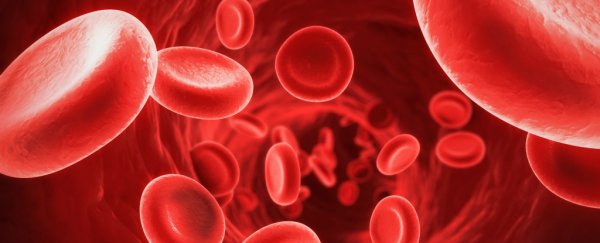Scientists from the University of New South Wales (UNSW) in Australia have used a world-first technique to change a single letter of DNA in human red blood cells, triggering them to produce more oxygen-carrying haemoglobin.
The technique could lead to new treatments for sickle cell anaemia and other life-threatening blood disorders. And the best part is, it does it by activating a naturally occurring gene that's normally dormant after birth.
"An exciting new age of genome editing is beginning, now that single genes within our vast genome can be precisely cut and repaired," study leader and Dean of Science at UNSW, Merlin Crossley, said in a press statement. "Our laboratory study provides a proof of concept that changing just one letter of DNA in a gene could alleviate the symptoms of sickle cell anaemia and thalassaemia - inherited diseases in which people have damaged haemoglobin."
The research was done in the lab, but because the researchers simply switched on a genetic variation that already exits in nature, Crossley explains that the approach should, in theory, be effective and safe to use in humans. "However, more research is needed before it can be tested in people as a possible cure for serious blood diseases," he added.
Haemoglobin is the vital protein found in red blood cells that picks up oxygen from our lungs and transports it around the body. Throughout our lives we produce two different kinds: foetal haemoglobin - which is able to quickly suck up oxygen from our mothers' blood - and adult haemoglobin.
But the problem is that mutations in adult haemoglobin are extremely common, with around five percent of the world's population carrying a mutant gene. Carrying just one of these isn't so bad, but if someone inherits mutant haemoglobin genes from both their parents, it can severely damage haemoglobin production and cause life-threatening conditions, such as sickle cell anaemia and thalassaemia.
However, a small group of these people also inherit a third mutation in their foetal haemoglobin, which results in it being produced after birth, and as a result, their symptoms are greatly reduced. "This good mutation keeps their foetal haemoglobin gene switched on for the whole of their lives, and reduces their symptoms significantly," said Crossley.
To try to recreate this beneficial mutation, the team used genome-editing proteins known as TALENs, which cut a gene at a specific point and then drop off the desired piece of DNA to be inserted. The cell then naturally tries to heal the DNA by patching it up with spare DNA lying around - in this case, it just so happens to be the piece left there by the researchers.
"We exploited this effect. When our genome editing protein cuts the DNA, the cell quickly replaces it with the donor DNA that we have also provided," said Crossley.
Publishing their results in Nature Communications, the team reports that this change allowed human red blood cells in the lab to produce more haemoglobin.
If the same genome-editing technique is shown to work effectively and safely in humans, it could greatly help to reduce the symptoms of sickle cell anaemia and other blood disorders. Importantly, this genetic change wouldn't be inherited, so would be less controversial than other gene editing techniques, such as the editing of human embryonic DNA by Chinese scientists.
Of course, we're a long way off trialling this technique in humans, but it's pretty exciting to think that there could be a way of turning on (and off) natural genes that are dominant in our genomes. The potential is huge.
Love science? Find out more about the world-leading research happening at UNSW Science.
